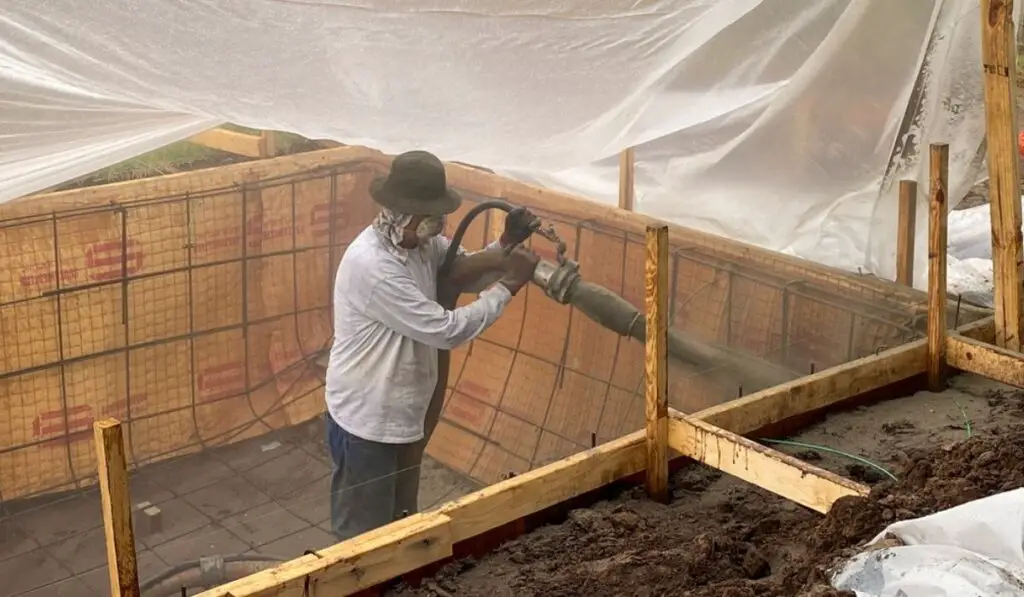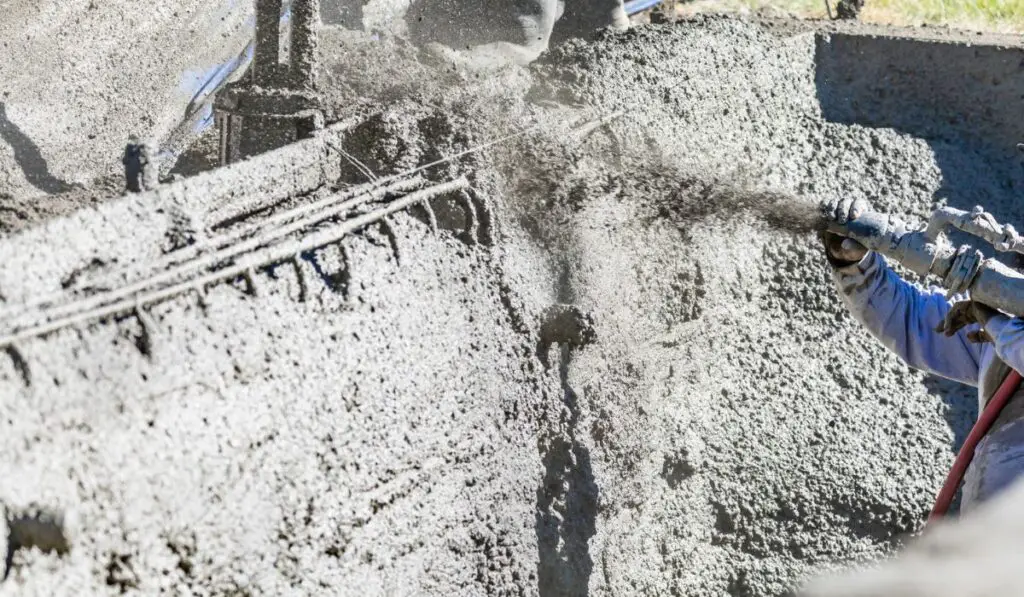Building a swimming pool in your backyard is nothing less than a long-term commitment to completely transform your property. If done properly, a pool can seamlessly connect your yard to your house, providing you with a wide range of options for relaxing and entertaining. A unique design can also increase your property’s resale view, making the pool an excellent investment. But which material should you use?
In terms of durability and customizability, gunite pools are superior to vinyl liner pools. However, when it comes to cost and installation time, vinyl pools reign supreme. Always consider the weather in your area, your backyard’s landscaping, and your home’s resale value when choosing the material.
With a seemingly countless array of pool styles and designs to choose from, it’s important to first understand the two most common pool materials, and then consider your pool’s shape and overall look. Let’s look at what exactly gunite and vinyl are, which material lasts longer, which costs more, and how you can choose the best one for your backyard.
What Is a Gunite Pool?

A gunite pool is basically a kind of concrete pool. In order to construct a pool according to your specific size and shape preferences, pool technicians excavate a hole in the ground, place a rebar framework into it, and spray a sand and concrete mixture over it.
Gunite pools offer nearly total design flexibility, allowing you to bring even the wackiest pool designs to life, if that’s what you’re seeking. You can also choose between a smooth plaster coating or tile finish, and add several other decorative touches for additional customization.
What Is a Vinyl Pool?
Vinyl liners are constructed and assembled in modular panels, which are then attached to the sides and bottom of your pool in the configuration you prefer. There are no limitations to their length, depth, or width, and they can be built in nearly every shape, including curved, free-form designs.
You can also add several different water features to your vinyl pool, such as swim-outs, benches, and sundecks. Vinyl liners are incredibly smooth and non-abrasive, making them ideal for people with sensitive feet and families with young children.
Which Material Lasts Longer?
Gunite pools are generally more durable, offer longer warranties, and last longer than vinyl pools. Vinyl liners damage more easily and are more susceptible to springing leaks, so it’s important to be careful when swimming in a vinyl pool.
It’s also important to note that once your vinyl liner reaches the end of its life, you’ll have to replace it, which will cost you somewhere between $2,500 and $4,500.
Which Material Is More Expensive?
The answer to this question ultimately depends on where you live. In southern states, vinyl pools are more expensive than gunite pools, while in northern regions, gunite pools are the pricier option.
As we mentioned above, gunite is a type of concrete that’s sprayed into an excavated hole in your backyard to form a pool shell. The structure is then finished with tile, plaster, or stones to make it waterproof.
In warmer southern states, this is pretty simple and requires only a minimal amount of steel wire reinforcement. However, in the north, it’s important to build the pool in such a way that it doesn’t crack under ice pressure. This stronger structure requires a lot more concrete, steel, and expertise, making it more expensive.
Vinyl pool liners usually don’t crack during winters; they just flex slightly with the increase in pressure. For this reason, vinyl liners cost the same no matter where you live.
However, it’s important to note that customized gunite pools generally cost a lot more than vinyl liners.
Maintenance Costs
On average, you’ll need to renovate both gunite and vinyl pools after every 10 to 15 years. That said, gunite pools need a bit more maintenance in general. This is because they’re affected by the water chemistry, which can cause dark and light finishes to discolor easily.
Gunite pools can also become contaminated with algae or develop jagged edges that can cut your feet. To fix this issue, you’ll need to perform an acid bath — a process that etches off the top layer of plaster.
An acid bath costs around $600 to $1,000, but you can only do it so many times. After three or four baths, you’ll need to re-plaster your entire pool, which can cost you anywhere between $1,500 and $2,500.
Repair Costs
Gunite pool repairs usually include retiling and resurfacing the pool, but sometimes the bond beam and bullnose also require fixing. Resurfacing and retiling typically cost around $8,000 to $15,000, depending on the size and finish of your gunite pool, and they take around one to two weeks.
However, if the bond beam and bullnose are also in need of repairs, the approximate cost increases substantially, reaching up to $25,000 or more.
On the other hand, aside from holes in the liner, vinyl pools don’t need any special maintenance or repairs. You’ll just need to replace the liner at some point (usually after 7-15 years), which will cost somewhere between $2,500 and $4,500.
How to Choose the Best Pool for Your Yard

Both gunite and vinyl pools are excellent choices. However, there are a few things you should consider before finalizing your purchase, including landscaping, how much use your pool will get, and whether it will increase your home resale value.
Landscaping
If you have limited installation space or challenging terrain, then it’s better to opt for a gunite pool. Gunite offers more flexibility than vinyl, allowing you to construct your pool in any shape and size you like.
With gunite, you’ll also be able to choose from a wide range of interior finishes, including rocks, tiles, and colorful plaster. You can even get creative with water features in gunite pools and add irregular underwater benches, tanning ledges, sun shelves, and built-in bar stools!
Weather
While ice and vinyl pools usually play nice together, there are a few cases where large ice sheets can damage the liner. In order to protect your pool from the pressure of the ice, it’s important to protect it from the harsh elements during winters.
Hail can also puncture the liner, after which you’ll need to drain and repair your entire pool.
Instead of doing all this extra work, you might want to opt for a gunite pool. Its material is considerably more durable and is usually a better option for people living in states that receive harsher weather.
Home Resale Value
If you’re selling your home, then it’s better to have a gunite pool in your backyard. Vinyl pools deteriorate over time and potential buyers will probably ask about the age of your pool liner.
If it’s nearing the end of its life, they might ask for a complete pool liner replacement as a precondition of the sale.
Time
When it comes to construction time, a vinyl liner pool is the clear winner. Gunite pools take a long time to install. Even if you hire a reputable and efficient pool installation company, the job will take a few months to complete.
On the other hand, vinyl pool installation can be completed within only a week or so.
